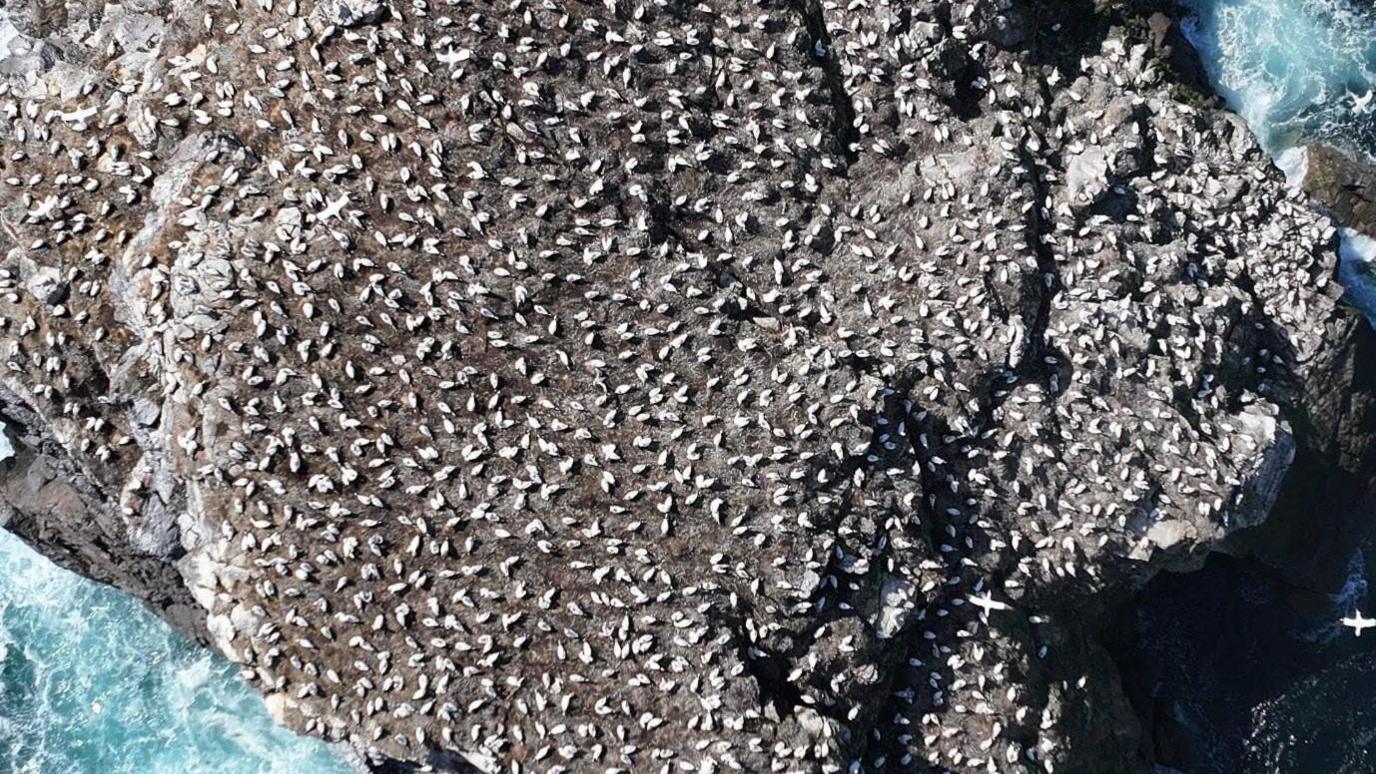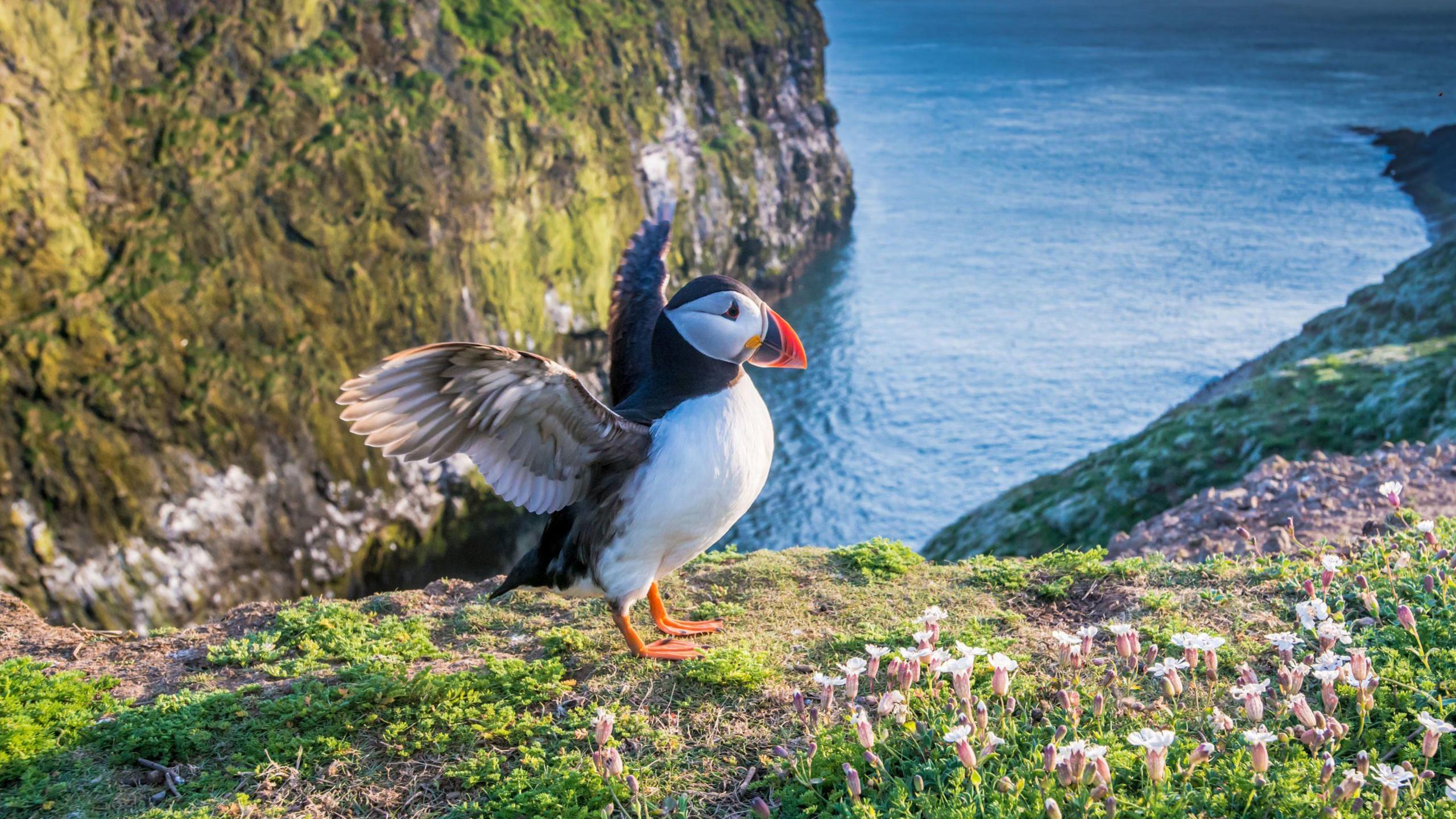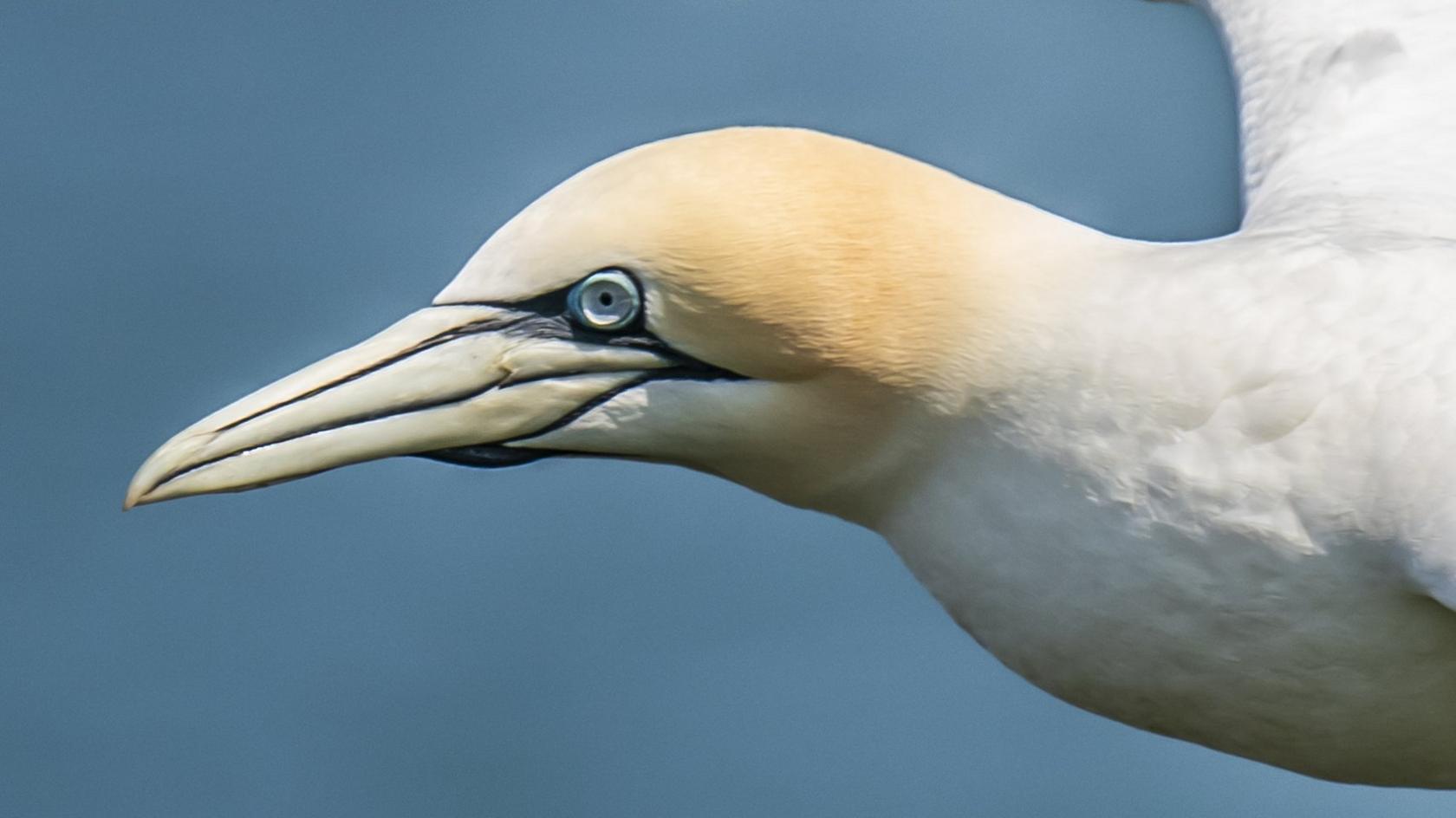Gannet colonies surveyed using drones and AI

Alderney Wildlife Trust said using a drone makes monitoring the birds more cost-effective
- Published
Gannet colonies in Alderney have been surveyed using drones with birds counted using Artificial Intelligence (AI).
The collaborative effort between the Seabird Watch Project and the Alderney Wildlife Trust hopes to better understand how the birds are recovering from avian flu.
An aircraft is normally used to survey the birds but this year the research groups used a drone to photograph and map the colonies, and AI software to automatically count the birds from the pictures.
The results of the survey are due to be published later this year in the Alderney Ramsar Annual Review, alongside data on gannet breeding, and deaths resulting from plastic entanglements.
'Cutting-edge drone'
Alderney has more than 1% of the global Northern Gannet population nesting within its Ramsar site.
Historically, the Alderney Wildlife Trust has censused the birds using a manned aircraft to capture a series of photographs, with each nest being manually counted by a team of volunteer ecologists.
The trust said the "monumental effort involved" meant censuses were only practical to carry out every five years.
However, to understand how the population is recovering from an avian flu outbreak in 2022, more regular censuses are needed.
"This cutting-edge drone census marks a critical step in understanding how the populations are recovering from avian flu", the trust said.

Multiple aerial drone images were taken in a lawn-mower fashion
The drone flew above the colonies in a lawnmower-like pattern, capturing a series of high-resolution images in about 30 minutes.
These images were stitched together to create both 2D and 3D maps of the nesting sites, and AI automatically counted the gannets.
"The precise flight path can be saved and easily replicated in future surveys, ensuring consistent data collection across breeding seasons" the trust said.
Wildlife trust ecologist Dr Tara Cox said: "We are thrilled to have the opportunity to update Alderney’s monitoring methods and contribute to international research efforts.
"This innovative approach allows us to gather finer spatial and temporal data on Alderney’s gannet populations in a cost-effective and non-invasive manner."
Follow BBC Guernsey on X (formerly Twitter), external and Facebook, external. Send your story ideas to channel.islands@bbc.co.uk, external.
Related topics
- Published4 August 2024

- Published1 April 2024

- Published18 February 2024
